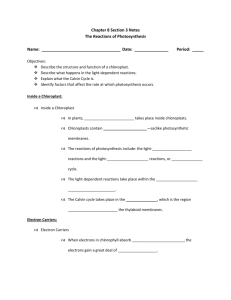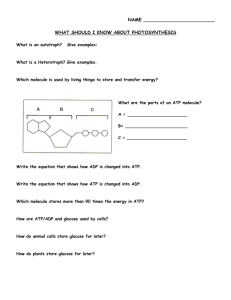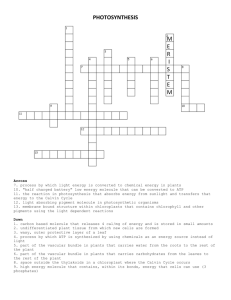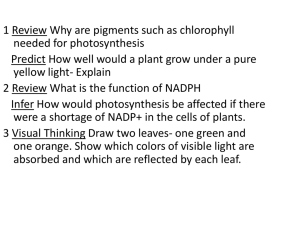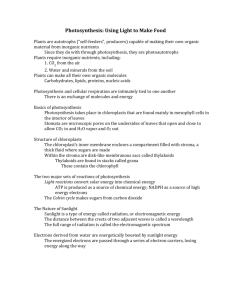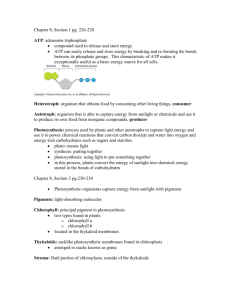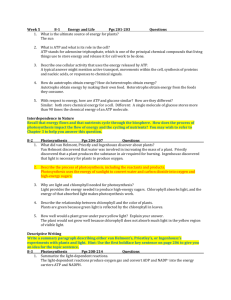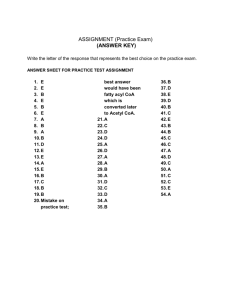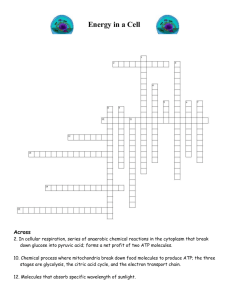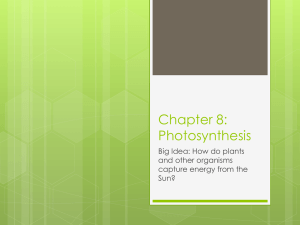Academic Biology ~ Reading Guide Ch
advertisement
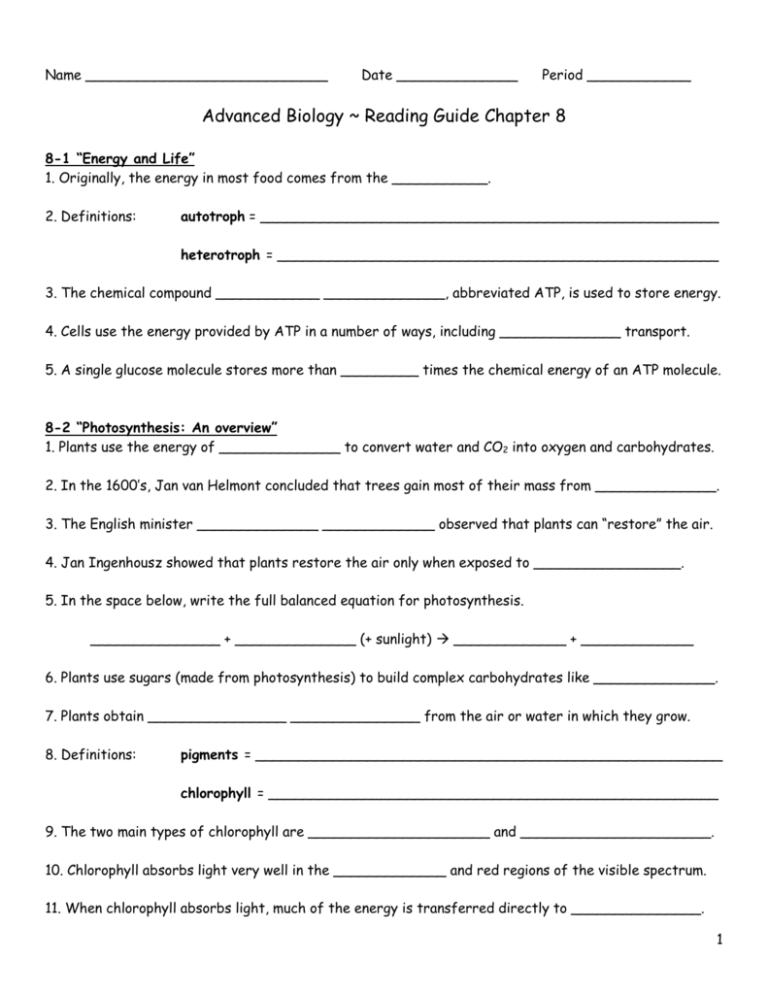
Name ____________________________ Date ______________ Period ____________ Advanced Biology ~ Reading Guide Chapter 8 8-1 “Energy and Life” 1. Originally, the energy in most food comes from the ___________. 2. Definitions: autotroph = _____________________________________________________ heterotroph = ___________________________________________________ 3. The chemical compound ____________ ______________, abbreviated ATP, is used to store energy. 4. Cells use the energy provided by ATP in a number of ways, including ______________ transport. 5. A single glucose molecule stores more than _________ times the chemical energy of an ATP molecule. 8-2 “Photosynthesis: An overview” 1. Plants use the energy of ______________ to convert water and CO2 into oxygen and carbohydrates. 2. In the 1600’s, Jan van Helmont concluded that trees gain most of their mass from ______________. 3. The English minister ______________ _____________ observed that plants can “restore” the air. 4. Jan Ingenhousz showed that plants restore the air only when exposed to _________________. 5. In the space below, write the full balanced equation for photosynthesis. _______________ + ______________ (+ sunlight) _____________ + _____________ 6. Plants use sugars (made from photosynthesis) to build complex carbohydrates like ______________. 7. Plants obtain ________________ _______________ from the air or water in which they grow. 8. Definitions: pigments = ______________________________________________________ chlorophyll = ____________________________________________________ 9. The two main types of chlorophyll are _____________________ and ______________________. 10. Chlorophyll absorbs light very well in the _____________ and red regions of the visible spectrum. 11. When chlorophyll absorbs light, much of the energy is transferred directly to _______________. 1 8-3 “The Reactions of Photosynthesis” 1. In plants and other photosynthetic eukaryotes, photosynthesis takes place inside ______________. 2. Definitions: thylakoids = ____________________________________________________ stroma = ______________________________________________________ 3. Thylakoids are arranged in stacks known as ___________, which help capture the energy of sunlight. 4. The light-dependent reactions take place in the _______________________ membranes. 5. The second stage of photosynthesis, the Calvin cycle, takes place in the ________________. 6. A ______________ molecule accepts high-energy electrons and transfers them to another molecule. 7. The conversion of NADP+ into _______________ helps to trap solar energy into chemical form. 8. High-energy electrons are carried to __________________ reactions elsewhere in the cell. LIGHT-DEPENDENT REACTIONS: 9. The light-dependent reactions use energy from light to produce _____________ and NADPH. 10. High-energy electrons move through the _____________ ________________ ____________ from Photosystem II to Photosystem I. 11. New electrons from ___________ molecules are used to replace the electrons lost from chlorophyll. 12. An enzyme called _________ ______________ produces ATP by allowing H + ions to pass through it. 13. High-energy electrons and H+ ions are picked up by NADP+ to form ___________________. THE CALVIN CYCLE: 14. ___________ Calvin discovered the cycle that uses ATP and NADPH to produce high-energy sugars. 15. Six ____________ _______________ molecules enter the cycle from the atmosphere. 16. Two 3-carbon molecules from the cycle are used to make a single 6-carbon ____________ molecule. FACTORS AFFECTING PHOTOSYNTHESIS: 17. Plants that live in dry conditions have a waxy coating on their leaves that prevents __________ loss. 18. At temperatures above __________ or below ___________, photosynthesis may stop entirely. 19. Increasing light _______________ will increase the rate of photosynthesis up to a certain level. 2
